
This book is printed on acid-free paper.

Copyright 2010 by General Mills, Minneapolis, Minnesota. All rights reserved. Published by Wiley Publishing, Inc., Hoboken, New Jersey Published simultaneously in Canada No part of this publication may be reproduced, stored in a retrieval system, or transmitted in any form or by any means, electronic, mechanical, photocopying, recording, scanning, or otherwise, except as permitted under Section 107 or 108 of the 1976 United States Copyright Act, without either the prior written permission of the Publisher, or authorization through payment of the appropriate per-copy fee to the Copyright Clearance Center, Inc., 222 Rosewood Drive, Danvers, MA 01923, (978) 750-8400, fax (978) 750-4470, or on the web at www.copyright.com. Requests to the Publisher for permission should be addressed to the Permissions Department, John Wiley & Sons, Inc., 111 River Street, Hoboken, NJ 07030, (201) 748-6011, fax (201) 748-6008, or online at http://www.wiley.com/go/permissions. Trademarks: Wiley and the Wiley Publishing logo are trademarks or registered trademarks of John Wiley & Sons and/or its affiliates.
All other trademarks referred to herein are trademarks of General Mills. Wiley Publishing, Inc., is not associated with any product or vendor mentioned in this book. Limit of Liability/Disclaimer of Warranty: While the publisher and author have used their best efforts in preparing this book, they make no representations or warranties with respect to the accuracy or completeness of the contents of this book and specifically disclaim any implied warranties of merchantability or fitness for a particular purpose. No warranty may be created or extended by sales representatives or written sales materials. The advice and strategies contained herein may not be suitable for your situation. You should consult with a professional where appropriate.
Neither the publisher nor author shall be liable for any loss of profit or any other commercial damages, including but not limited to special, incidental, consequential, or other damages. For general information on our other products and services or for technical support, please contact our Customer Care Department within the United States at (800) 762-2974, outside the United States at (317) 572-3993 or fax (317) 572-4002. Wiley also publishes its books in a variety of electronic formats. Some content that appears in print may not be available in electronic books. For more information about Wiley products, visit our web site at www.wiley.com. p. cm. cm.
Includes index. ISBN 978-0-470-48577-4 (cloth) 1. Casserole cookery. I. Pillsbury Company. TX693.P534 2010 641.8'21dc22 2009009318 Manufactured in the United States of America 10 9 8 7 6 5 4 3 2 1 Cover photo: General Mills Editorial Director Jeff Nowak Publishing Manager Christine Gray Manager, Cookbooks Lois Tlusty Editors Lori Fox and Grace Wells Recipe Development and Testing Pillsbury Kitchens Photography General Mills Photography Studios and Image Library Photographer Val Bourassa Food Stylists Nancy Johnson Wiley Publishing, Inc.
Publisher Natalie Chapman Associate Publisher Jessica Goodman Executive Editor Anne Ficklen Assistant Editor Charleen Barila Production Alda Trabucchi and Kristi Hart Cover Design Suzanne Sunwoo Art Director Tai Blanche Interior Design and Layout Holly Wittenberg Photography Art Direction Chris Everett/See Design, Inc. Prop Stylist Michelle Joy Manufacturing Manager Kevin Watt  the Bake-Off contest through the years
the Bake-Off contest through the years  There is nothing like the Pillsbury Bake-Off Contest. Have you ever made something so good that you just had to share it? Or tweaked a recipe until it was just right? Or nervously waited as the family took the first bite of a new dish? Then youve experienced a Bake-Off Contest. Like everyday cooks around the country, Pillsbury Bake-Off winners envisioned making a dish so yummy that family and friends would ask for more. Of course, the Bake-Off Contest is a little different. A panel of judges try that first bite.
There is nothing like the Pillsbury Bake-Off Contest. Have you ever made something so good that you just had to share it? Or tweaked a recipe until it was just right? Or nervously waited as the family took the first bite of a new dish? Then youve experienced a Bake-Off Contest. Like everyday cooks around the country, Pillsbury Bake-Off winners envisioned making a dish so yummy that family and friends would ask for more. Of course, the Bake-Off Contest is a little different. A panel of judges try that first bite.
Ninety-nine other cooks share your kitchen. But the pay-off for your great recipe is a million times more lucrative than usual. Whether youre a finalist at a Pillsbury Bake-Off Contest or simply a star in your own kitchen, you share something special. Both you and Bake-Off contestants know the food you developed with love for your family will become treasured family recipes in someones home. 1950s The first Pillsbury Bake-Off Contest spurred a phenomenon that many copied but few have perfected over the years. Throughout the 50s, the annual Bake-Off Contest showcased the creativity of Americas best home cooks and their favorite new flavors in the kitchen.
The fictitious everywoman, Ann Pillsburyaka The Pillsbury Ladypresided over the contest and its innovative magazines. Ann encouraged cooks young and old to share a love of good baked things that is so very strong in our country. Reflecting mid-century interest in the glamorous home, the contest was held at New York Citys Waldorf-Astoria Hotel where it resided for many years. The contest showcased kitchen innovations including a white General Electric four-burner, double-oven. By the late 50s, electric mixers, another labor- and time-saving device, were introduced in each cooks kitchen at the contest. 1960s In the 60s, the Busy Lady was a Bake-Off theme. 1960s In the 60s, the Busy Lady was a Bake-Off theme.
Bake-Off recipes were shortcutted, streamlined and up-to-dated for you by Pillsbury. Although the heart of the home was still the kitchen in the 60s, the fact that many women led busy lives outside of the kitchen meant everyday cooks created easy but delicious meals for their families. While it used to take all day to make a bread, the prizewinning Chicken Little Bread promised a great homemade loaf in less time. In 1967, the official Bake-Off magazine featured shortcuts to prize recipes and offered homemade goodness with hurry-up timing to the average family cook. At the Bake-Off Contest, the self-cleaning oven made its debut, and fresh refrigerated biscuit and crescent roll doughs were used as key ingredients for the first time. In 1969, the contest changed forever when it introduced three divisionsflour, mix and fresh refrigerated dougheach with a $10,000 Grand Prize.
The best recipe won a $25,000 cash prize. 1970s By 1972, Ann Pillsbury had disappeared from the Bake-Off Contest, but a new icon had taken her place. The Pillsbury Doughboy, in a cowboy hat, graced the cover of the 1972 Bake-Off recipe collection. His friendly face would remain a standing symbol of the contest for some time to come. The Doughboys cowboy hat symbolized more than a friendly demeanor. It signaled the Bake-Off Contest was on the move.
Houston, New Orleans, San Diego and San Francisco were new sites for the contest and reflected Americas growing diversity and shifts in population away from the East Coast. Celebrity hosts and judges awarded prizes on Bake-Off day. By the early 70s, the health food craze was recognizable in the Bake-Off Contest. Many recipes featured apples, carrots, whole wheat, oats and granola, but most contestant recipes reflected a lack of time for cooking. In the mid-70s, the Bake-Off recipe collection cost around a dollar and included recipes developed for the newest kitchen innovation, the microwave oven. 1980s In the mid-80s, the Bake-Off Contest offered a fast-forward cuisine of quick and easy recipes, snacks and a new entrant to the arena, ethnic recipes.

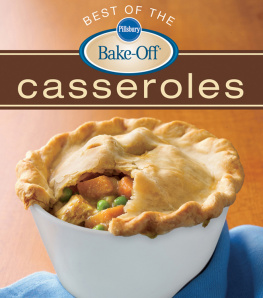

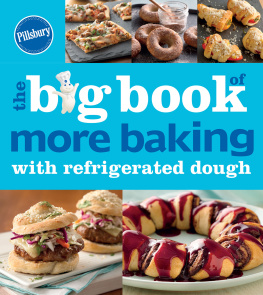
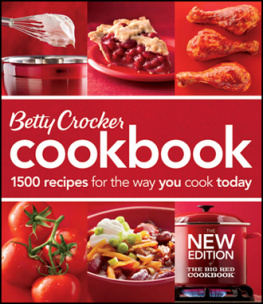
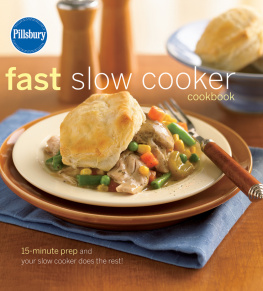


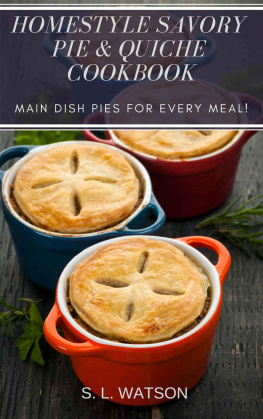

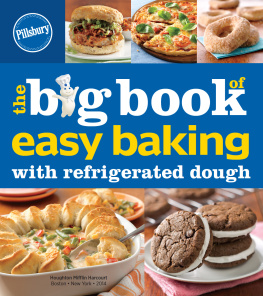
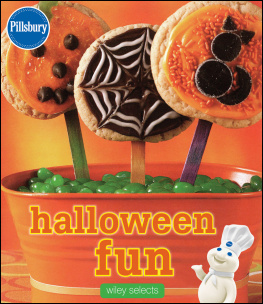
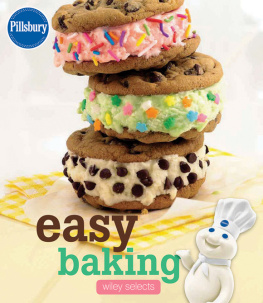

 This book is printed on acid-free paper.
This book is printed on acid-free paper.  Copyright 2010 by General Mills, Minneapolis, Minnesota. All rights reserved. Published by Wiley Publishing, Inc., Hoboken, New Jersey Published simultaneously in Canada No part of this publication may be reproduced, stored in a retrieval system, or transmitted in any form or by any means, electronic, mechanical, photocopying, recording, scanning, or otherwise, except as permitted under Section 107 or 108 of the 1976 United States Copyright Act, without either the prior written permission of the Publisher, or authorization through payment of the appropriate per-copy fee to the Copyright Clearance Center, Inc., 222 Rosewood Drive, Danvers, MA 01923, (978) 750-8400, fax (978) 750-4470, or on the web at www.copyright.com. Requests to the Publisher for permission should be addressed to the Permissions Department, John Wiley & Sons, Inc., 111 River Street, Hoboken, NJ 07030, (201) 748-6011, fax (201) 748-6008, or online at http://www.wiley.com/go/permissions. Trademarks: Wiley and the Wiley Publishing logo are trademarks or registered trademarks of John Wiley & Sons and/or its affiliates.
Copyright 2010 by General Mills, Minneapolis, Minnesota. All rights reserved. Published by Wiley Publishing, Inc., Hoboken, New Jersey Published simultaneously in Canada No part of this publication may be reproduced, stored in a retrieval system, or transmitted in any form or by any means, electronic, mechanical, photocopying, recording, scanning, or otherwise, except as permitted under Section 107 or 108 of the 1976 United States Copyright Act, without either the prior written permission of the Publisher, or authorization through payment of the appropriate per-copy fee to the Copyright Clearance Center, Inc., 222 Rosewood Drive, Danvers, MA 01923, (978) 750-8400, fax (978) 750-4470, or on the web at www.copyright.com. Requests to the Publisher for permission should be addressed to the Permissions Department, John Wiley & Sons, Inc., 111 River Street, Hoboken, NJ 07030, (201) 748-6011, fax (201) 748-6008, or online at http://www.wiley.com/go/permissions. Trademarks: Wiley and the Wiley Publishing logo are trademarks or registered trademarks of John Wiley & Sons and/or its affiliates.  the Bake-Off contest through the years
the Bake-Off contest through the years  There is nothing like the Pillsbury Bake-Off Contest. Have you ever made something so good that you just had to share it? Or tweaked a recipe until it was just right? Or nervously waited as the family took the first bite of a new dish? Then youve experienced a Bake-Off Contest. Like everyday cooks around the country, Pillsbury Bake-Off winners envisioned making a dish so yummy that family and friends would ask for more. Of course, the Bake-Off Contest is a little different. A panel of judges try that first bite.
There is nothing like the Pillsbury Bake-Off Contest. Have you ever made something so good that you just had to share it? Or tweaked a recipe until it was just right? Or nervously waited as the family took the first bite of a new dish? Then youve experienced a Bake-Off Contest. Like everyday cooks around the country, Pillsbury Bake-Off winners envisioned making a dish so yummy that family and friends would ask for more. Of course, the Bake-Off Contest is a little different. A panel of judges try that first bite.